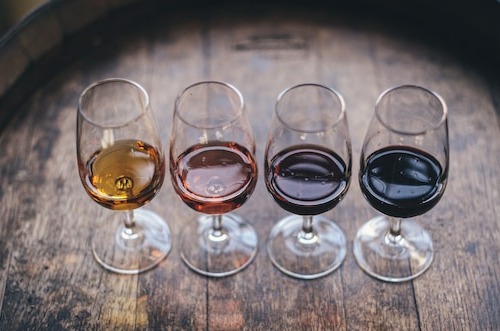
In W30 in the wine landscape, the United Kingdom (UK) will increase tariffs on European still wine by USD 2.54 per bottle (20% increase) in August, while tariffs on sparkling wines will decrease by USD 0.24 per bottle (7% decrease). The UK's exit from the European Union (EU) has resulted in an average USD 1.91 increase in the cost of each bottle of wine. The price paid by UK distributors for wine is now similar to what customers can buy it for in a store in Galicia, Spain. Tariff changes may affect Galician wine exports to the UK, with importers facing a potential increase of USD 2.54 per bottle. Last season, Galicia sold over 20 million liters of wine in the UK, making it one of the main markets for the region's denominations of origin.
In Lazio, Italy, an alarming situation with downy mildew is affecting the grape harvest and wine production. The damage is estimated to range from 20% to 90% due to the combination of violent rainfalls, heatwaves, and drought creating favorable conditions for the spread of the disease. Over 900 hectares of vineyards have been destroyed in the Castelli Romani region, impacting the production of various wines, including Doc Frascati, Doc Castelli Romani, Doc Minori, and Igt Lazio wines. The extent of the infection is still evolving, and the actual impact on the wine industry may be even worse than the initial estimates.
The Russian government has raised import customs duties on wines from unfriendly countries from 12.5% to 20% with a minimum rate of USD 1.5/liter, effective until the end of 2023. Additionally, Russian wine producers are increasing their supply to the domestic market. Wine production in Russia increased from 430 million to 500 million liters in 2022, and experts predict continued positive growth in 2023. Additionally, in the first half of 2023, wine imports to Russia increased by 57% year-on-year (YoY) from 133.83 million liters to 210.26 million liters. Italy remained the top exporter with 59.83 million liters, an increase of 45% YoY, followed by Spain with 33.37 million liters and Georgia with 30.82 million liters. France experienced a significant increase in supply to Russia, with a 65% YoY increase, ranking fourth with 20.07 million liters. Portugal surpassed Chile to claim the fifth position with 16.64 million liters, representing a 134% YoY increase, while Chile supplied 9.69 million liters, a 35% YoY rise.
The South African energy crisis has led to forced rolling blackouts, which are adversely affecting the country's wine industry. The irregular power supply is impacting all stages of wine production, and wineries are facing the challenge of paying inflated prices for electricity. Additionally, the expenses for electricity and diesel fuel for operating generators exceed the budgeted amounts for wine enterprises. In 2022, the wine industry in South Africa contributed over USD 3 billion to the country's GDP. However, in 2023, the grape harvest experienced a more than 14% decline YoY due to adverse weather conditions and the ongoing energy crisis.
Lastly, Chile, the fourth-largest wine exporter globally, aims to promote its luxury wines in Asia, particularly in China. In 2022, China became the second-largest destination for Chilean wines, with 6.6 million cases of bottled wine exported to the country, only surpassed by Brazil.





